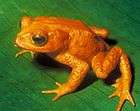Bioevent
A bioevent or bio-event (a shortening of 'biotic event' or 'biological event') is an event recognised in a sequence of sedimentary rocks, where there is a significant change in the biota as recorded by assemblages of fossils over a relatively short period of time. It has been defined as "short-term (hours or days to kyrs) locally, regionally, or interregionally pervasive changes in the ecological, biogeographical, and/or evolutionary character of biotas that are isochronous or nearly so throughout their range".[1] Bioevents either relate to diversification of a particular fossil group or a reduction, these may equate to speciation events or extinction events, or may only represent migration. Records of the appearance and disappearance of particular taxa at a single locality are insufficient to define a bioevent.[2]
References
- ↑ Sageman, B.B.; Kauffman E.G.; Harries P.J.; Elder W.P. (1997). "Cenomanian/Turonian bioevent and ecostratigraphy in the Western Interior Basin: contrasting scales of local, regional, and global events". In Brett C.E. & Baird G.C. Paleontological Events - Stratigraphic, Ecological and Evolutionary Implications. New York: Columbia University Press. pp. 520–570.
- ↑ Zhang, S.; Barnes C.R. (2004). "Conodont bio-events, cladistics and response to glacio-eustasy, Ordovician-Silurian boundary through Llandovery, Anticosti Basin, Québec". In Beaudoin A.B. & Head M.J. The palynology and micropalaeontology of boundaries. Special Publications. 230. London: Geological Society. pp. 76–78. Retrieved 15 March 2012.
